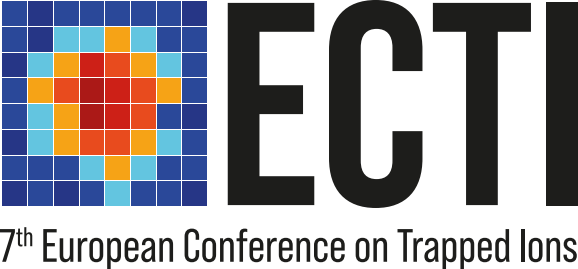Speaker
Description
Single-ion optical atomic clocks have reached fractional uncertainties of 1 part in $10^{-18}$ [1], but reaching this level of uncertainty requires long averaging times. Using $n$ uncorrelated ions, the same uncertainty could be obtained $n$ times quicker. If these $n$ ions could be placed in an entangled state however, speed-ups beyond this standard quantum limit are in principle possible with the potential to produce results up to $n^2$ times faster [2].
We trap strings of $^{88}$Sr$^+$ ions in a microfabricated monolithic linear rf trap with a three-dimensional electrode geometry [3]. This design provides 7 operation zones, plus a separate loading zone, each of which can hold ions in a deep potential well with low heating rates. The trap design and vacuum package provide a high degree of optical access available on both sides of the chip wafer.
To perform entanglement-enhanced metrology the ionic clock/qubit transition is driven by a laser that possesses two important properties: an extremely narrow linewidth around a stable optical carrier, and a low level of noise power at frequencies a motional trap frequency detuned from the optical carrier. We have realised a high power ultrastable 674 nm laser for the optical qubit in $^{88}$Sr$^+$ based on a commercial Titanium-Sapphire laser system. We have measured Allan deviation at the 1 Hz level out to beyond 100 s averaging time and frequency noise below a white noise level of a few ${\rm Hz}/\sqrt{\rm Hz}$ out to 10 MHz from the carrier.
We have recently performed our first entangling operations on pairs of trapped ions, using a Molmer-Sorensen interaction on the optical transition to generate a maximally entangled state with initial fidelities of 96%. The steps required to produce larger entangled states and use them for entanglement-enhanced metrology will also be covered.
[1] S. Brewer et al., Phys. Rev. Lett. 123, 033201 (2019)
[2] V. Giovannetti et al., Science 306, 1330 (2004)
[3] G. Wilpers et al., Nature Nanotech 7, 572 (2012)

